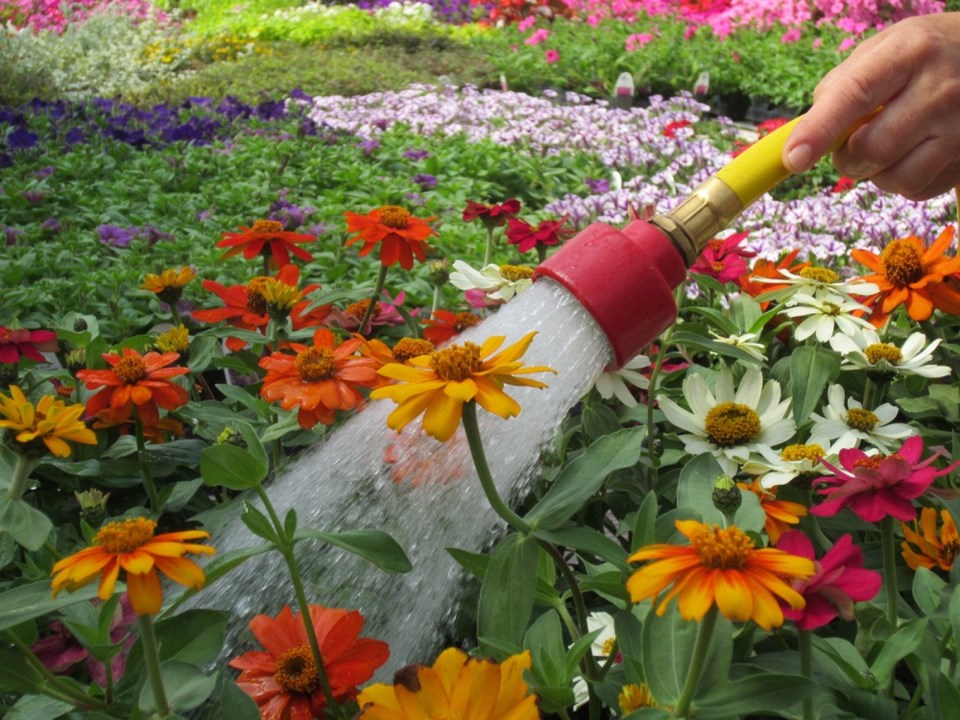Water is crucial to the survival of all our plants, especially during times like our current spell of hot weather. With so many summer water restrictions in place, we need to use water far more wisely.
Plants and trees absorb water most efficiently in the morning when the temperature is on the rise. In the evening, plants still use water, but much of it is transpired away. This is particularly true for larger trees and lawns. However, if the evening is the only time you can water, go ahead.
Soaker hoses and drip systems are ideal for watering because they direct the water to the root zones where it is absorbed more effectively. Hand watering also works well if you focus the water around the roots of the plants.
After watering, to ensure that the moisture has thoroughly soaked the roots, check to see how deep the water has penetrated the soil.
Use a trowel to open up the soil a bit in order to judge the effectiveness of your watering and to get a sense of how long you need to spend watering each area. This is most important for hedging plants. A little water on top of the soil does not help the roots.
When hand watering, use a "soft rain" nozzle that has 400 to 1,000 holes to better disperse the water and to achieve good soil saturation.
These nozzles are especially effective when watering hanging baskets and containers. Give them a good soaking but let them dry out slightly between waterings to prevent the soil getting too wet and soggy. And again, try to water your baskets and containers in the morning.
With the constant watering needed during heat spells, you must feed your plants more frequently with both a slow-release and a liquid fertilizer, like 20-20-20, to resupply any nutrients leached out during periods of steady watering.
Vegetable gardens, too, need more water, but try to keep water off the foliage. Cucumbers, squash and pumpkins will get mildew overnight if their foliage is wet. Water only the soil and only in the morning.
As we are now in the early blight season, keep the foliage dry on your tomatoes and potatoes. Apply lime around your tomato plants for some added calcium. If your other vegetables appear to need additional nutrients, a fertilizer, like Flower and Vegetable 10-15-19, would be ideal applied now; it will feed them until mid-September.
Tree watering is imperative right now, especially for younger trees. Be sure to water around the drip lines where the roots are located. Tree bags do not supply the amount of moisture that younger trees need. At least once a week, give them a good soaking and check to ensure the water has penetrated down to the roots.
All your evergreen trees, shrubs and flowering trees need to be well watered, especially for those still recovering from winter damage.
Rhododendrons, azaleas and camellias are all shallow rooted and as a result, require regular, thorough watering, as well as a mulching of fine bark to help retain this moisture.
Neighbourhood trees could also use some help, especially those that have no water resource provided. They, too, are part of our urban tree canopy, and it is often up to each of us to help out. All trees provide an invaluable service of cooling and filtering the air, as well as offering a home for wildlife.
Don’t forget that bees and pollinators also need water, and shallow birdbaths and damp, muddy areas are critical for their survival.
We all share a responsibility to care for not only our private trees but also for those around us on public lands.
So, within our local water restrictions, let’s help out where we can, especially during times of extreme heat.



